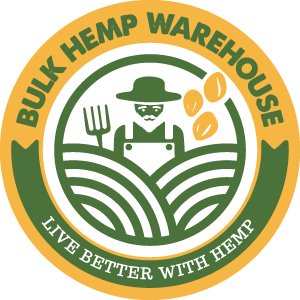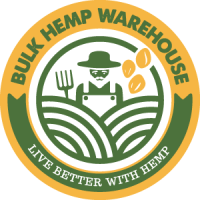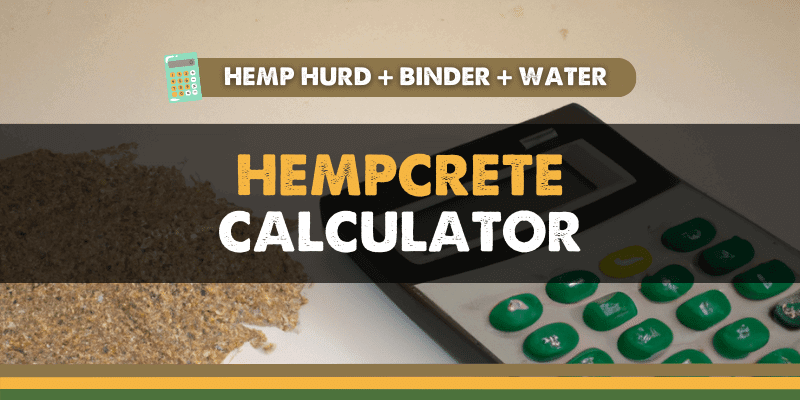
Hempcrete Calculator
Share this FREE Resource with someone who will appreciate it, or on your preferred social network.
FREE HEMPCRETE CALCULATOR TOOL FOR YOUR HEMP PROJECT
Looking for help with how to calculate how much hemp hurd and binder you need for your hempcrete building project?
How to Use the Hempcrete Calculator:
- Cubic footage: You need to determine how what the volume of wallspace your project will have, making sure to not include doors and windows.
- Wall Thickness: The industry standard for a hempcrete wall thickness is 12 inches (1 foot). But in rare cases you may want it to be thinner or thicker, so we’ve included this variable on the calculator.
- Results: The results will product a rough estimate of the material requirements you will need for your project, including the hemp hurd, binder and water amounts.
Material Requirements:
Disclaimer: This is for estimation purposes and we hold no liability or responsibility of the end results of your project. There are many factors involved in working with hempcrete, such as location, humidity, raw material input.
For hemp hurd, it depends on the density of the material, which can vary. A rough estimate is usually around 8-10 pounds of hemp hurd per cubic foot.
For binder, it depends on the specific type you’re using. Usually, it’s a lime-based binder, and the amount needed is determined by the volume of the hemp hurd.
Benefits of Hempcrete
Versatile
There are many types of applications and ways to work with hempcrete as an insulation material from dome structures to standard modern architecture.
Carbon Negative
Hempcrete sequesters carbon out of the air, making it a very earth-friendly product that doesn't contribute to the greenhouse effect.
Fire-proof
Because hempcrete is made with a lime-based binder it is virtually fire-proof, which is such an essential benefit these days with all of the fires.
Breathable
Because of hempcrete's insulative qualities and it's permeable nature your walls will literally be breathing. Which helps with temperature regulation.
Clean Air
Many modern homes are built with toxic materials and easily off-gas and grow mold and mildew.
Easy to Handle
Hempcrete is lightweight and fluffy. It's literally only three ingredients and can be worked with by even young people.
Eco-Friendly
Hemp is grown without using herbicides and pesticides, and requires less water than trees.
Healthy Environment
Because hempcrete is an alkaline building material and non-toxic, you will absolutely love the feeling you get living in a hemp home.
Save Money
Although you may need to invest a little more upfront on building costs, in the long run you'll be saving a lot on your, heating/cooling energy bills.
Clean & Healthy
Hempcrete is one of the most non-toxic, healthy, materials to work with and feels amazing when living in it.
Earthquake-Safe
Hempcrete's flexibility and light weight, combined with its ability to absorb and dissipate stress, contribute to its earthquake resistance.
Support Local
Now that hemp is grown in the USA & Canada you can be confident you are supporting local farmers and businesses.
Hempcrete Applications

New & Existing Walls
Interstitial Space Walls
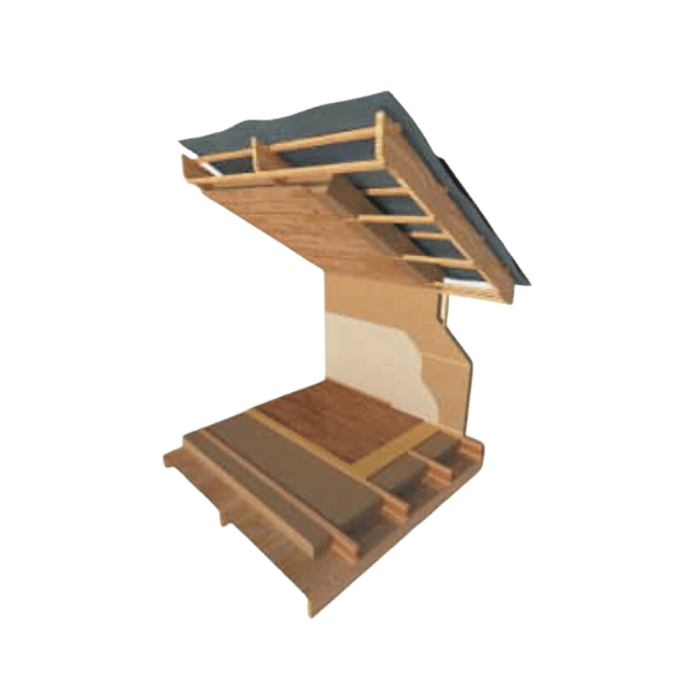
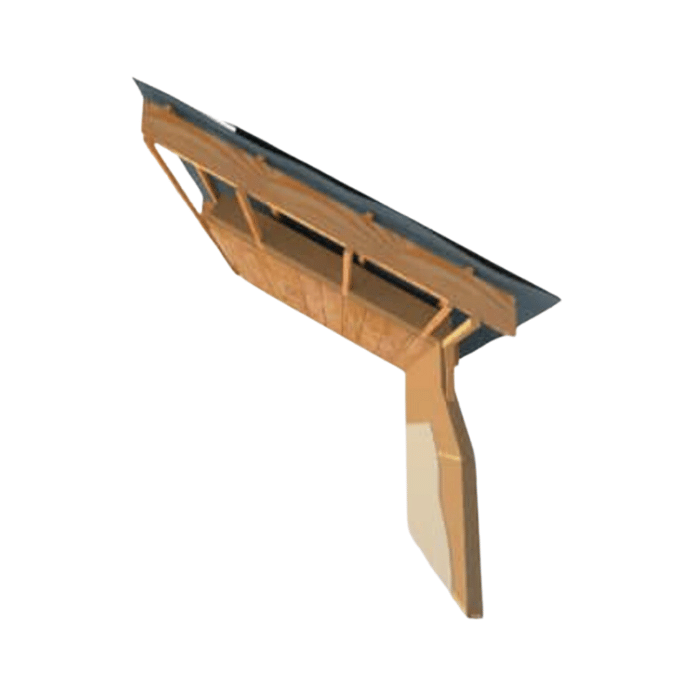
Attic Spaces & Ceilings
Hempcrete Floors
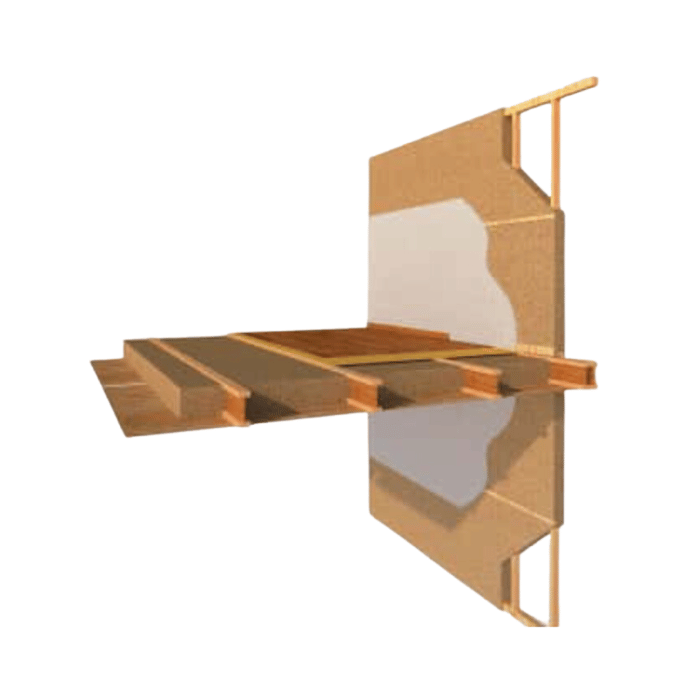
Hempcrete Compared to Other Insulation Products
Hempcrete is a standout insulation material known for its eco-friendliness and strong insulating properties.
Derived from hemp, it boasts a negative carbon footprint and resists mold, making it a sustainable choice for construction with effective humidity regulation, and many other environmental benefits.
Feel free to share this page as a free resource for other eco-friendly builders or for those wanting to learn about building with hempcrete and the difference between hempcrete and other insulation products.
Get a Custom Hempcrete Project Quote
PRODUCT TYPES | HempCrete | Concrete Blocks | Poroton Blocks (Clay) | Thermal Insulation | XPS, EPS (Polystyrene) |
|---|---|---|---|---|---|
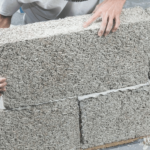 |  | 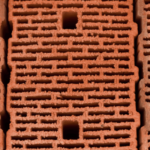 |  | 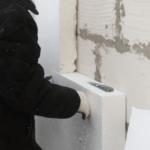 | |
HEAT STORAGE
Materials with substantial weight retain heat effectively. During winter, such materials help the house maintain warmth, while in summer, they contribute to a noticeably cooler environment—similar to the way old stone houses or churches behave. | Many insulation materials with high ecological value tend to have a low bulk density, resulting in poor heat retention. This makes them unsuitable for use in both infill and masonry applications.
| XPS and EPS exhibit minimal weight, leading to a lack of heat/cold storage capacity. Additionally, their lightweight nature renders them unsuitable for both infill and masonry purposes. | |||
HEAT REFLECTION
The natural lime binder reflects infrared heat, cold and heat. This is very often not taken into account, although this leads to large energy savings. | Non Heat Reflective | Non Heat Reflective | Non Heat Reflective | Non Heat Reflective | |
THERMAL INSULATION
Due to the low lambda value, hempcrete insulates very well. With a wall thickness of approx. 30–40 cm, depending on the location and construction of the house, you already fall into the class. Without additional insulation. | Insulation has its limitations; an (ETICS) must be installed as well. | Insulation has its limitations; an (ETICS) must be installed as well. | |||
ECONOMICALLY
The monolithic design saves construction costs in the form of working hours, later heating costs and cooling are saved. | Monolithic construction saves time, unlike ETICS. | Monolithic construction saves time, unlike ETICS. | Elaborately crafted | The material is inexpensive, but the labor hours are extensive. | |
LONGEVITY, EASE OF USE
Thanks to the monolithic construction, the material can easily be separated and reused later. Furthermore, the longevity is significantly higher than with other materials because aging processes such as moisture etc. cannot harm the material. | Monolithic construction is durable for a considerable period, unlike ETICS, which is not reusable. | For monolithic construction, there is a relatively extended lifespan, unlike ETICS, which is not reusable. | Short-lived | Short-lived | |
AIR QUALITYThe lime binding material contributes to indoor air disinfection, as lime possesses antibacterial properties. Ionization and condensation energy work together to produce exceptionally clean room air. | |||||
REUSABLE
Humanity must adopt the practice of reusing materials rather than discarding them. Even ecological materials lose their value if they become waste after a certain period. | Turns to waste | Turns to waste | Turns to waste | Toxic after use | |
CO² NEGATIVE
Primarily attributed to the swift growth of the hemp plant (50 times faster than wood), hempcrete boasts a negative CO² balance. | CO² Positive | Significant CO² emissions during production | CO² Positive | CO² positive, substantial emissions during production and disposal. | |
REGULATION of HUMIDITY
Hemp stones absorb the moisture in the room air, clean and disinfect it and give it back to the room evenly. | No impact on air moisture. | No impact on air moisture. | No impact on air moisture. | No impact on air moisture. | |
PERMEABLE
Due to low lambda value, hempcrete provides excellent insulation. With a wall thickness of approximately 30–40 cm, depending on the house’s location and construction, it already meets the standard without the need for additional insulation. | Numerous thermal insulation boards are prone to mold in excessive moisture conditions and provide inadequate insulation when damp. | XPS and EPS are impermeable. |

Hempcrete Technical Data
- Thermal Conductivity: 0.06(W/mK)
- R Value: 2.5 per inch
- Density: ρ = 260 kg/m3
- Strength Rating: 1MPa
- Acoustic Absorption Coefficient: 069 NRC
- Fire test rating: 15 cm (6 inch) – El 60 min
- Specific Temperature Capacity: (с= 1700 J/(kg·K)
- H20 Vapour Permeability: ∂ = 0.131 mg/ m · h · Pa
- H20 Vapour Diffusion Resistance Factor: µ = 5.50
HempCrete Production Process
HempCrete Formula
1 Part Hurd
2 Parts Water
1.5 Parts Binder
HempCrete Instructions
- Start a mixer.
- Add the Lime Binder (Fifth Element)
- First put hemp in then add water so that the hemp particles get wet.
- Run the mixer for 2-3 minutes to achieve uniform mixture.
- For best results, apply within 20-30 minutes after mixed.
Form Work
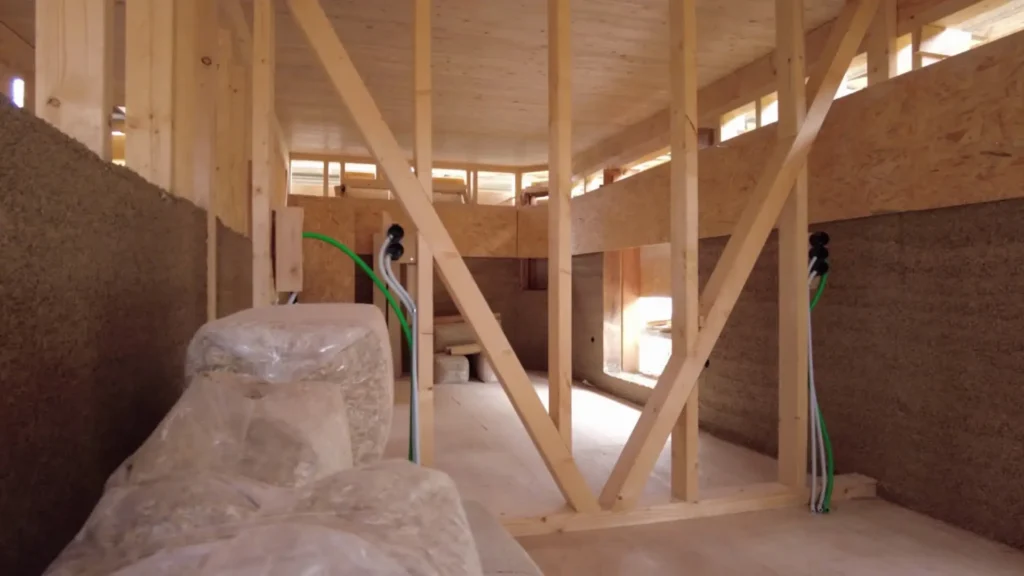
- Use 16-24″ high plywood or OSB for the formwork.
- Attach the formwork directly to the studs using screws.
- Make sure the formwork is level and vertical.
- Check the distance from your formwork to the stud,
that will direct the thickness of hempcrete. - Use spacers for fast installation.
- No need to treat timber or formwork with oil or limewash.
- You can remove the formwork instantly after you reach
the top with hempcrete. - Shift your formwork upward halfway to the hempcrete
mix and repeat all the steps again.
Areas of Application
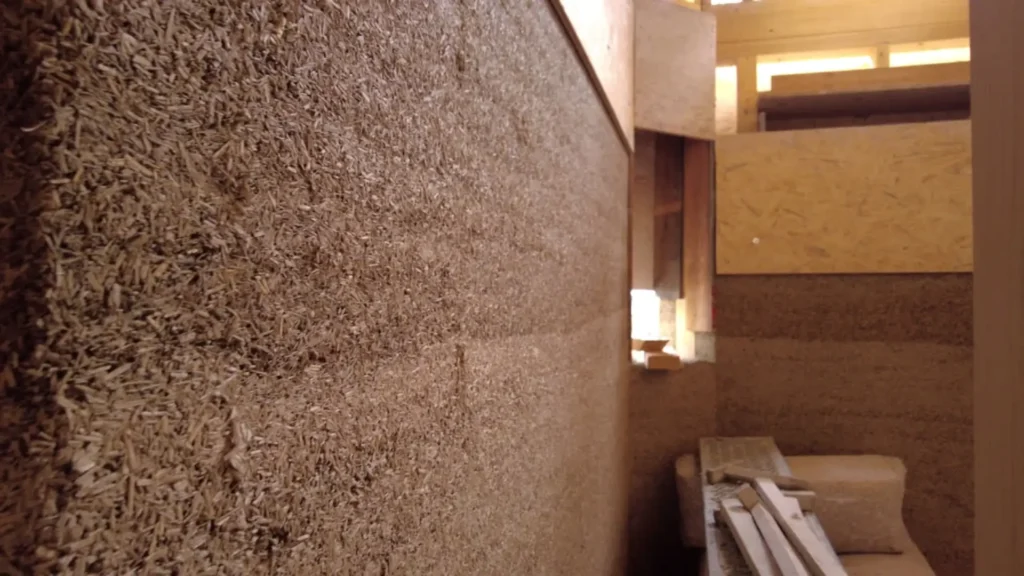
- Metal Frame
- Concrete Walls
- Stone Walls
- Timber or Bamboo Frame
- Roofs
- Floors
- Interstitial Space
- New or Existing Structures
- Dome and Pyramid Buildings

